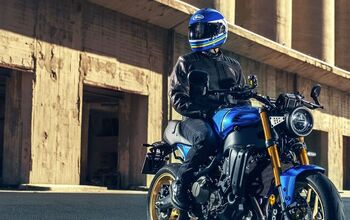Sportbike Performance Handbook
Read this book, and you'll know more about how your bike works and how to make it faster than probably 90% of the motorcycling public. I wish this book had been available years ago when I was just a squid. It's the straight dope, performance theory explained in understandable language, smoothly laced with the historical development of various systems as well as examples of different performance extremes, from dragbike to GP. Read this book, and you'll know more about how your bike works and how to make it faster than probably 90% of the motorcycling public.
Kevin Cameron shouldn't need much of an introduction to US bike magazine readers. His column in Cycle World is as close to poetry (unaccompanied by electric guitar) as most biker guys can appreciate. In fact, it has been said many times that a compilation of his columns would make a fine book. And it would, but this book was written from scratch. And good scratch it is, from a man who was tuning TZ750s very successfully at Daytona and has been very much in touch with the cutting edge ever since.
However, Cameron also understands that you're going to mess with your bike anyway, so he tells you what to expect by explaining how it works in the first place. The book starts out with an explanation of how to correctly use the adjustability of your motorcycle and then plunges right into how the engine works.
When he started to explain the four-stroke engine cycle, I thought I might just skim a few pages, but by the second page of that chapter I learned about things I never knew, and I've been working on bikes for over ten years. This continued for several hours each night as I read it with even more interest than I give to a new issue of Performance Bike.
Cameron's ability to simplify and explain complicated things like squish bands, chassis and suspension setup is enhanced by his ability to illustrate with diagrams and charts. He doesn't get into the heavy math, although he does tell you where to look it up if the more complicated calculations in the Appendix don't quite cut it for the thermodynamically gifted among us. And the great thing is that he doesn't make pronouncements. The book just explains the trade-offs of different modifications, and lets you decide for yourself.
Sportbike Performance Handbook explains not just the basics, it also delves into a lot of areas where you might not necessarily want to make mods, like the transmission, and it's good to know how it works. It explains a lot of things you always hear references to, like flow-bench testing, and teaches you how to read dyno runs. The book also goes into performance areas like super charging and nitrous that are kind of fun, even though they're not for everyone.
If I had to recommend just two books to the neophyte performance oriented motorcyclist, they would be Cameron's Sportbike Performance Handbook and Keith Code's Twist of the Wrist II. In fact this book really isn't just for sportbike enthusiasts but for anyone who wants to understand how their bike works better so that he (or she) will know how to improve it.
Motorcycle Online Rating: *****More information can be found at www.motorbooks.com.
Softbound, 8 1/2 x 10 5/8" 160 pages.
200 black and white illustrations.
$19.95 from Motorbooks International.
ISBN 0-7603-0229-4
More by Paul Peczon




























Comments
Join the conversation